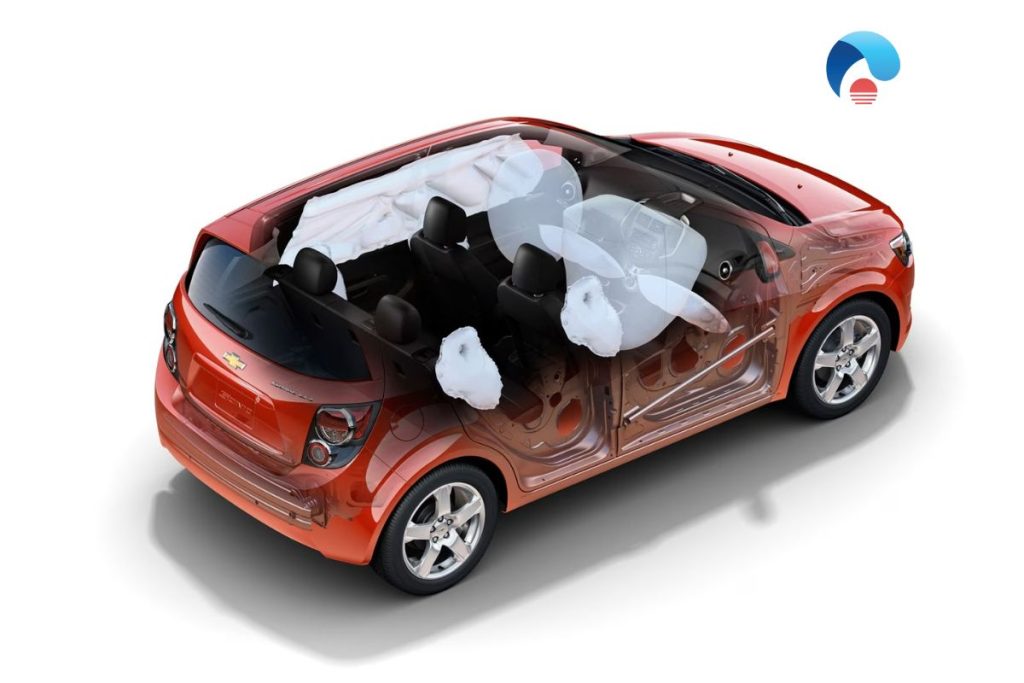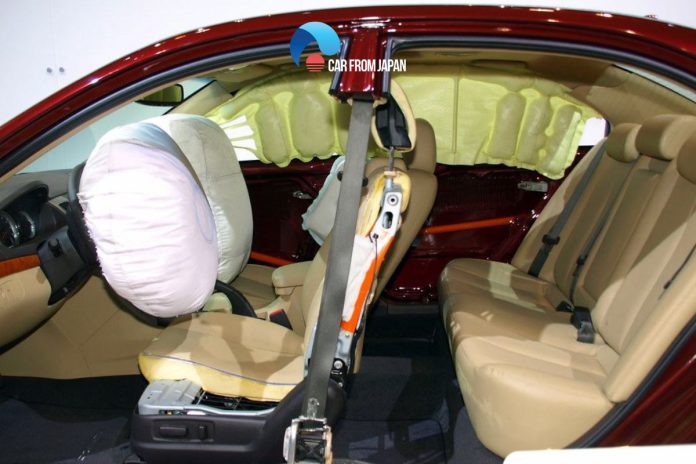Today’s airbags in automobiles are much more advanced than the original design, and they continue to save lives every day.
Interested in knowing more about this small but essential safety gear? Let’s look at the history of airbags and how they have evolved!
Contents
- Evolution of Airbags in Automobiles: From the Beginning to Modern Time
- FAQs on The Evolution of Airbags
- Why did it take over 30 years for airbags to appear in production cars?
- Which car brand first made airbags available to the public?
- How did seatbelt laws influence the development of airbags?
- When did passenger airbags become standard and why the delay?
- What’s the most unusual airbag ever developed?
- What’s the next frontier for airbag technology?
- Did airbags evolve differently in racing cars vs. street cars?
Evolution of Airbags in Automobiles: From the Beginning to Modern Time
Airbags have been saving lives in automobiles for decades. The concept and development started in 1941, but there was no notable success until the ’50s. John W.
Hetrick was the first person to claim a patent in 1953. A personal car accident experience drove him to design this safety instrument.
Another man named Walter Linderer patented his airbag design in the same year. However, those airbags were far from perfect.
All they could do was create a safety cushion in the event of hard-braking and collisions. Those airbags were just pre-deployed air-filled bags, nothing else.
However, the design evolution of airbags has been a continuous process. Let’s talk about the most significant changes in chronological order.
Modern Airbag Prototype
The deploying airbags in their primary days could not provide adequate protection. The prototype of modern airbags became a reality in 1963.
A Japanese man named Yasuzaburou Kobori invented that more dependable system, but it was still far from ideal.

Breed’s Sensor and Safety System
The system took a massive leap of improvement after Allen Breed invented a sensor and safety system in 1968.
His crash sensing device was relatively inexpensive to manufacture. It encouraged the automakers to incorporate the system into their cars.
The system used an accelerometer and a pressure sensor to detect collisions and deploy the bag. It allowed for the more accurate deployment of the airbag.
Breed brought numerous improvements to his airbag design over the following decades. He also worked on other devices to improve the safety of both drivers and passengers.
General Motors and Ford also included it in their cars as an add-on.
A Standard Safety Feature in the ’80s
In the late 1980s, airbags became a standard feature in most automobiles. It happened primarily due to government regulations that mandated their installation in all new cars.
Airbags continued to evolve during this time, with new designs and technologies being developed constantly. In the late 1990s, many countries required that all new cars be equipped with side-impact airbags.
SEE MORE: Do Racing Cars Have Airbags?
The Revolutionary Pre-Safe System
In the early 2000s, automakers started adding more advanced technology to their vehicles. One such example is Mercedes Benz’s Pre-Safe system.
This system used sensors and computers to predict when a crash was likely to occur; it would then deploy the airbags and seatbelts before the collision occurred.
The safety add-on helped save many lives, as it gave drivers an extra few seconds to react.
The Present and Future of Airbags
Today’s cars are equipped with even more advanced technology than ever before. Airbags have come a long way since Hetrick’s original design in 1953.
They continue to evolve and become more advanced every day, thanks to the hard work of engineers and scientists worldwide.
Automakers are currently thinking of bringing airbags for knees. We’ll see what the future of airbags holds in coming years.

FAQs on The Evolution of Airbags
Why did it take over 30 years for airbags to appear in production cars?
Early airbags deployed too slowly and too violently.
The key breakthrough came in the 1960s–70s with solid propellants (borrowed from rocket tech) that inflated bags in milliseconds.
Which car brand first made airbags available to the public?
General Motors offered optional airbags in select 1973 Chevrolet Impalas.
But they were expensive and unpopular, leading GM to drop the idea for years.
How did seatbelt laws influence the development of airbags?
Ironically, airbags were originally designed to replace seatbelts, not complement them.
When seatbelt use became mandatory, airbags evolved into “supplemental restraint systems” (SRS).
When did passenger airbags become standard and why the delay?
Passenger airbags became common only after the early ’90s because they required advanced sensors and deployment algorithms to avoid harming smaller occupants or children.
What’s the most unusual airbag ever developed?
The pedestrian airbag, introduced by Volvo in 2012, deploys from under the hood to cushion pedestrians’ heads during an impact, a world-first innovation.
What’s the next frontier for airbag technology?
External airbags, systems that inflate outside the vehicle before impact.
Companies like ZF and Hyundai are developing side-curtain-style external airbags that could reduce collision forces by up to 40%.
Did airbags evolve differently in racing cars vs. street cars?
Yes. Racing focused more on harnesses and HANS devices, but now race cars also use driver-specific airbags integrated into steering wheels and suits, custom-calibrated for crash data.
So now you know about the evolution of airbags in automobiles throughout the years.
Hope you find this insightful and see you in our next Industry knowledge piece of information!



